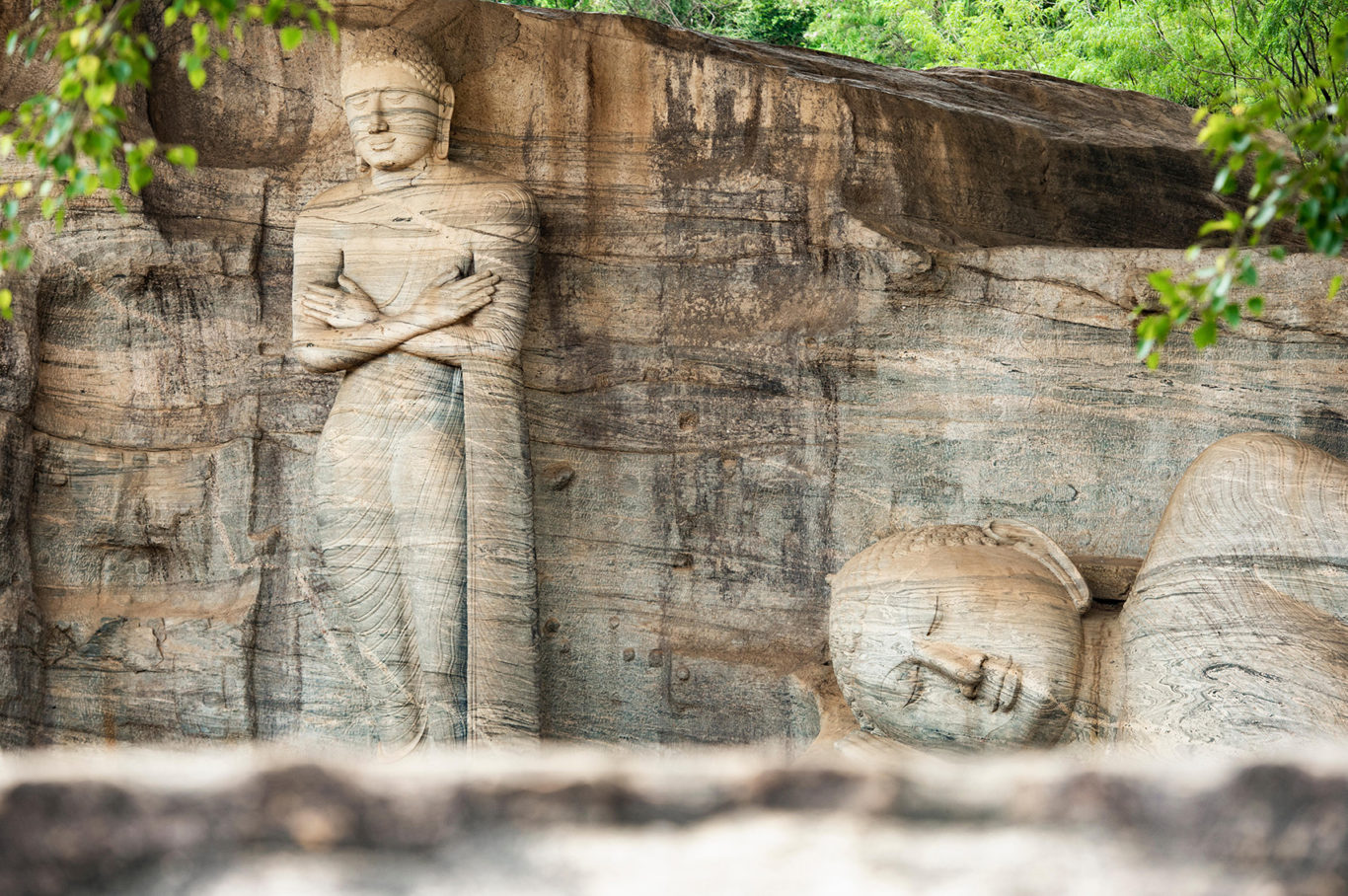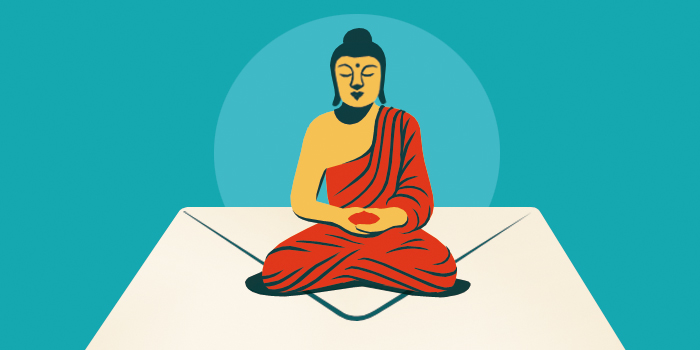Who was Ananda?

A statue of the reclining Buddha with a figure some scholars believe to be the Buddha’s cousin and attendant, Ananda, at Gal Viharaya, Polonnaruwa, Sri Lanka. | Travel Wild / Alamy Stock Photo
“Thus have I heard . . . ” Such is the traditional opening to most Buddhist sutras.
The “I” in that phrase is Ananda, the Buddha’s cousin and personal attendant, whose prodigious memory allowed him to recount the discourses after the Buddha’s death and thus preserve the teachings for later generations. Even the sutras that scholars believe were composed long after the Buddha died often include this opening line attributing the text to Ananda.
Ananda was one of the Buddha’s first disciples. The Buddha visited his hometown of Kapilavastu a few years after his enlightenment (accounts vary from two to twenty years) and convinced many of his family members, including his cousin Ananda, to join the sangha.
For the first 20 years of his teaching career the Buddha did not have a consistent personal attendant. But as the sangha grew and its management became more complex, the Buddha needed more reliable help, and he asked for volunteers from his sangha. Legend has it that all the monks offered their services except Ananda, who was confident that regardless of who volunteered, the Buddha would choose the right attendant.
The Buddha, of course, chose Ananda. But when he did, Ananda laid out certain conditions. He did not want special treatment in terms of food or accommodations. Rather he asked for the privilege of bringing visitors before the Buddha, for permission to ask the Buddha any questions that occurred to him, and for any teachings given in his absence to be repeated. The Buddha agreed, and Ananda served as the Buddha’s devoted assistant, secretary, and spokesman for the next 25 years.
Shortly after the Buddha’s death, at which a sorrowful Ananda was present, Mahakasyapa called a council to recite the teachings and monastic rules and determine what must be preserved for future generations. Although Ananda’s power of recall was well known, he was not yet an arhat (Pali, arahant)—enlightened—and therefore was not invited to attend. The most popular account holds that the night before the council, he attained enlightenment as he lay down to sleep.
At the council Ananda is said to have repeated 15,000 stanzas of what are now called the sutras without omitting a single syllable. But while he was praised for his accurate memory of the teachings, Ananda was not among the foremost monks in his understanding of them. Still, because of his role in preserving the teachings, he was named Treasurer or Guardian of the Dharma.
Another of Ananda’s major achievements was helping convince the Buddha to ordain women. The first was Mahaprajapati Gautami, the Buddha’s aunt and stepmother. Ananda gave teachings to the fledgling order of nuns, as well as several teachings to the sangha at large.
Ananda is one of the best-loved figures in Buddhism, not for his wit or wisdom but for his faithful service to the Buddha, his advocacy on behalf of women, and the debt all Buddhists owe to his amazing memory.

Tricycle is more than a magazine
Gain access to the best in sprititual film, our growing collection of e-books, and monthly talks, plus our 25-year archive
Subscribe now